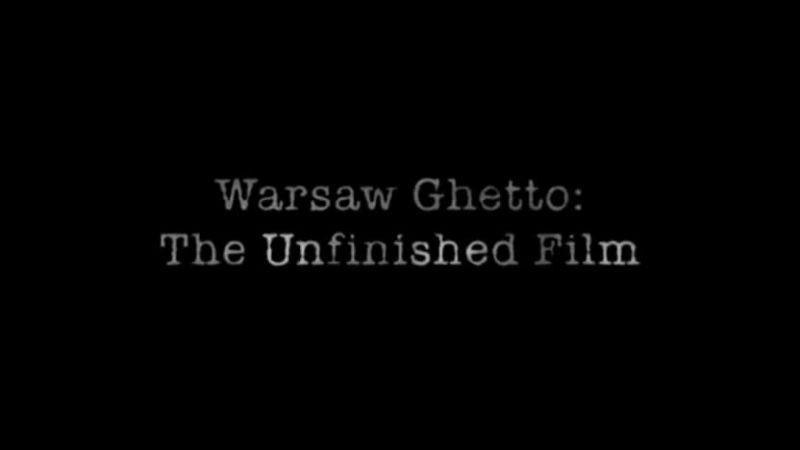Warsaw Ghetto – The Unfinished Film: The Warsaw Ghetto housed 440,000 Polish Jews and Roma during World War II. Typhus, starvation and random murders killed over 100,000 of the ghetto’s residents even before the Nazis began the massive deportations to the Treblinka extermination camp. Yet the Nazis created a mysterious propaganda film that juxtaposed meticulously staged scenes of Jews enjoying a life of luxury in the ghetto with other, chilling images that required no staging at all.
After the war, filmmakers and museums – unaware of the deception – used images from the film as objective illustrations of life in the ghetto, which subsequently became engraved as historical truth. With contributions from ghetto survivors and one of the German cameramen, Warsaw Ghetto: The Unfinished Film reveals how the Nazis used the ghetto as a film set, the inhabitants as actors and the decaying bodies as exhibits, and examines how far we can trust historic images.
Warsaw Ghetto – The Unfinished Film
Warsaw Ghetto (German: Warschauer Ghetto, officially Jüdischer Wohnbezirk in Warschau, “Jewish Residential District in Warsaw”; Polish: getto warszawskie) was the largest of the Nazi ghettos during World War II. It was established in November 1940 by the German authorities within the new General Government territory of occupied Poland. At its height, as many as 460,000 Jews were imprisoned there, in an area of 3.4 km2 (1.3 sq mi), with an average of 9.2 persons per room, barely subsisting on meager food rations.
From the Warsaw Ghetto, Jews were deported to Nazi concentration camps and mass-killing centers. In the summer of 1942, at least 254,000 Ghetto residents were sent to the Treblinka extermination camp during Großaktion Warschau under the guise of “resettlement in the East” over the course of the summer. The ghetto was demolished by the Germans in May 1943 after the Warsaw Ghetto Uprisings had temporarily halted the deportations. The total death toll among the prisoners of the Ghetto is estimated to be at least 300,000 killed by bullet or gas, combined with 92,000 victims of starvation and related diseases, the Warsaw Ghetto Uprising, and the casualties of the final destruction of the Ghetto.
Nazi officials, intent on eradicating the ghetto by hunger and disease, limited food and medical supplies. An average daily food ration in 1941 for Jews in Warsaw was limited to 184 calories, compared to 699 calories allowed for gentile Poles and 2,613 calories for the Germans. In August, the rations fell to 177 calories per person. This meager food supply by the German authorities usually consisted of dry bread, flour and potatoes of the lowest quality, groats, turnips, and a small monthly supplement of margarine, sugar, and meat. As a result, black market economy thrived, supplying as much as 80% of the ghetto’s food. In addition, the Joint had opened over 250 soup kitchens, which served at one time as many as 100,000 meals per day.




